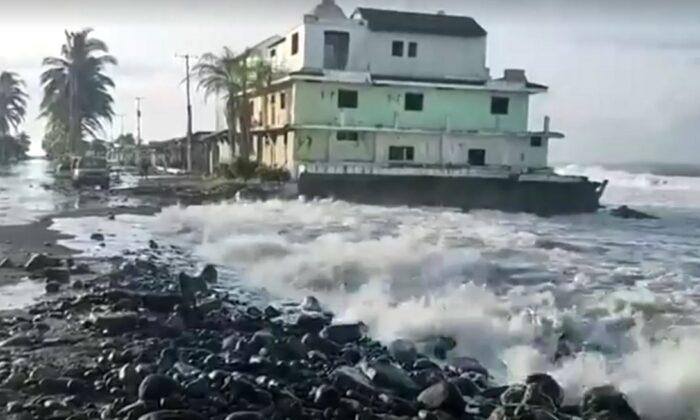A German warship sunk by a torpedo during World War II has been found on the seabed off Norway more than eight decades after it was attacked.
The vessel, which measures 571 feet long and still bears the Nazi swastika, led an assault on the southern Norwegian city of Kristiansand in the April 1940 invasion of the country.

During the operation, it came under fire from Norwegian artillery, was torpedoed by a British submarine, and was finally submerged by the Germans themselves, according to a Statnett statement.
When World War II had broken out seven months earlier, in September 1939, Norway declared itself neutral. Hitler ordered its invasion on April 9, 1940, however, and German troops quickly occupied Oslo, Bergen, Trondheim, and Narvik. Backed by Allied forces, the Norwegian Army mounted a resistance effort, but the Nazis ultimately took control in June 1940 until liberation in April 1945.

“Moreover, it was the only large German warship that was lost during the attack on Norway with an unknown position. After all these years we finally know where the graveyard to this important warship is,” said Kvalø.
“With the main battery of nine cannons in three triple turrets, this was the largest and most fearsome ship in the attack group against Kristiansand.”
Signs of wreckage were first detected three years ago during inspection work when sonar detected a shipwreck 15 meters from an under-sea power cable between Norway and Denmark.
Then this summer, the firm’s senior project engineer, Ole Petter Hobberstad, carried out further investigations from an offshore vessel called Olympic Taurus. He and his team used multi-beam echo sounders and a Remotely Operated Vehicle (ROV) to examine the scene.

“When the ROV results showed us a ship that was torpedoed, we realized it was from the war. As the cannons became visible on the screen, we understood it was a huge warship. We were very excited and surprised that the wreck was so big,” Hobberstad said.
Further research into the ship revealed more about its fate, according to Statnett.
In a book published the same year as the Nazi invasion, German Rear Admiral Otto Schenk wrote of dense fog at the time. He described how the boat came under fire as it entered a fjord near Kristiansand, before later being hit by a British torpedo. It was then sunk by order from the German captain.
“To find such a special war wreck is rare and extra fun for us who work with underwater investigations,” said Hobberstad.





